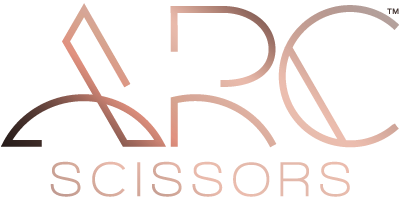Long Layers: 10 Pro Tips + Common Cutting Mistakes

“I want layers, but keep the length”—we’ve all heard our clients say this a million times. That’s why the long layered haircut will keep your books filled and your clients coming back.
From the consultation to finishing with dry-cutting techniques, we’re sharing all the dos and don’ts of cutting layers from experts below!
1. Ask the Right Questions First
Before cutting, set expectations. Farhana Premji (@xo.farhana.balayage) always starts her consultation with
-
Do you want pieces to fall forward when you tie your hair back?
-
How do you like your face-framing layers styled?
-
Do you flip your hair side to side or stick to one part?
-
What features do you want to accentuate—cheekbones, jaw, collarbones?
These questions define the starting point and shape of your layers.
2. Mistakes That Can Ruin Long Layers + How To Prevent Them
- Hole In The Perimeter: To prevent this, leave ½-inch of the perimeter out of each section for insurance and plan ahead, says Liz Haven (@lizhaven)
-
Choppy Layers: To prevent choppy lines, Matt Swinney (@matt.swinney) always finishes with dry-cutting to soften up layers. Here’s how:
- Twist the hair and set the scissors inside the twist.
- Bring the scissors through in a slight open and close motion at an angle to soften and blend the hair, but DO NOT close the shears all the way or you’ll remove too much.
- Matt says to make sure to use super sharp scissors like ARC™ Scissors Designer Series PHANTOM II 6" that glide easily through the hair without snagging.
Matt's go-to Scissor:

-
Harsh Lines + Thin Layers: Júnior Estevam (@juniorestevamhair) cuts 99 percent of layers on dry hair to create softer styles and visually see how the hair will look every day. Also, make sure to comb the hair as straight as possible before cutting each layer.

Júnior works with ARC™ Scissors Master Series PARAGON II to achieve fresh layers without harsh lines.
3. Pro Tips for the Face Frame
The face frame is the focal point of long layers. Farhana, Liz, and Matt agree on a few fundamentalCut Dry:
- Cut Dry: See the hair’s natural fall for accuracy.
- Avoid Holes: Create a guide and blend toward the length.
- Adjust Elevation: Keep finer hair lower (0–45°) for fullness; elevate denser hair higher for softness.
- Body Position: Always face the client to ensure symmetry.
Matt prefers his ARC™ PHANTOM II for this section: “It transitions beautifully from wet to dry cutting, giving total control around the face.”
4. How To Connect Fringe Into The Face Frame
Curtain bangs are one of 2021’s biggest hair trends, so how do you blend face-framing layers into the fringe? “Sometimes I leave the frame and curtain disconnected,” says Liz. “If I decide to connect the two, I like to comb the hair (dry) into natural fall and connect A to B using shallow and deep point-cutting methods.”
5. How To Cut Layers On Curly Hair
Liz always uses dry-cutting techniques for long layers on curly hair, cutting in its natural curly state. “I may even fluff or brush it a bit to really expand the natural curl pattern,” says Liz. Her go-to designs are round perimeters and round layers for curly hair.
6. How To Cut Triangular Layers
For clients craving movement and a narrower shape, Shannel lifts and overdirects:
- Lift higher for shorter-on-top layering.
- Overdirect back for shorter layers in the back and longer in front. The result: a soft triangular silhouette that flatters most face shapes.
7. Keep Density In Layers
“Long hair grows out best when it kind of trails off and you keep a little bit more density in the back,” says Matt. He recommends controlling texture by angle:
- More diagonal = stronger texture
- More parallel = softer texture

8. Blending Layers: How To Do It Correctly
“This technique should be less about adding more layers and more about connecting Point A to Point B,” says Farhana. “When held at different elevations, you’ll typically see a corner that needs to be cut to eliminate the bulky weight caused by disconnected layers.”
Important reminder: Be conservative with how much you’re taking off when blending! Blending layers means removing MORE hair, and this can cause the collapse of the shape.
9. Use Layers To Prevent Choppy Balayage Results
Farhana pairs every color service with a fresh haircut, like layers, to accentuate the color and complete the look. For balayage, remember this: the lightest point of the top of the layer must connect with the transition zone of the bottom layers for a balayage gradient blend.
To create the shape of a look, Farhana reaches for her PHANTOM II 6". “My PHANTOM II are super lightweight and actually CUT through the hair without pushing it,” Farhana explains.
10. Body Positioning Tips For Cutting Layers
“I don’t think there is a one-size-fits-all rule for body positioning while layering,” says Shannel. There are many ways to get the same outcome. It’s ultimately up to you to find what’s most comfortable.
“I’ve met many hairstylists who’ve had carpal tunnel surgery, shoulder surgeries, numb pinkies, and some who have had to lay on a bag of ice for their back/shoulder in between clients. Don’t do things just because someone said so. You have one body. Listen to it. Take care of it.”



 ARC™ PHANTOM II
ARC™ PHANTOM II ARC™ PARAGON II
ARC™ PARAGON II
